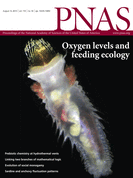科技日报讯据 物理学家组织网8月13日报道,利用人类多能干细胞和来自脑膜炎细菌的DNA切割蛋白,美国莫格里奇研究所和西北大学的研究人员开发出了一种能精确定位和修复缺陷基因的有效方法。
发表在8月12日出版的美国《国家科学院学报》上的这篇论文称,新技术比以前的方法简单得多,是再生医学、药物筛选和生物医学等基础研究领域的一项重大进展。论文的第一作者是莫格里奇研究所再生生物学小组的侯中钢(音译)和西北大学的张杨(音译)。
侯中钢说:“利用这一系统,我们几乎可以修复任何基因缺陷,包括那些可能引发癌症的基因缺陷。此外,该技术还能用于人类多能干细胞,这为其他具有想象力的应用打开了大门。”
西北大学张杨所在的研究小组集中研究了奈瑟氏菌属的脑膜炎细菌,因为它们是Cas9蛋白的最佳来源,而借助Cas9蛋白,便可精确剪短受损的DNA片段。他说:“我们能够利用不同类型的小分子RNA来指导这一蛋白质,这使得我们能精确地移除、替换或纠正有缺陷的基因。而先前的方法大都是建立在蛋白质基础之上的技术,需要通过改造蛋白来实现剪切。”现在,借助新技术,科学家们能够在短短一到三天时间内就合成RNA,而此前改造合适的蛋白质往往需要数周甚至数月的时间。
威斯康星大学胚胎干细胞生物学教授詹姆斯·汤姆森教授和其他多名学者都认为,这项研究有很多实际应用价值。汤姆森教授说:“人类多能干细胞可以无限地增殖,它们产生了对人类至关重要的所有细胞类型,因此对于再生医学、药物筛选和生物医学研究来说,它们极其珍贵。通过与西北大学的合作,我们更进一步了解了这些细胞的潜能,因为我们现在能够以更精确、更有效的方式来操控它们的基因组。”
西北大学分子生物学系教授埃里克·宋提莫尔表示,该研究结果还同时表明了这项技术的安全性。他说:“此前的研究中,偶然或脱靶剪切是科学家们所不得不面对的一个问题,这些问题的存在让再生医学应用面临着一些潜在的不利影响。新技术不但克服了这些安全障碍,还以其便利特点让相关的研究从一个复杂的项目变为了一个常规的实验技术,对此后的研究而言该技术意义深远。”(生物谷 Bioon.com)
生物谷推荐的英文摘要

PNAS doi: 10.1073/pnas.1313587110
Efficient genome engineering in human pluripotent stem cells using Cas9 from Neisseria meningitidis
Zhonggang Houa,1, Yan Zhangb,1, Nicholas E. Propsona, Sara E. Howdena, Li-Fang Chua, Erik J. Sontheimerb,2, and James A. Thomsona,c,d,2
Genome engineering in human pluripotent stem cells (hPSCs) holds great promise for biomedical research and regenerative medicine. Recently, an RNA-guided, DNA-cleaving interference pathway from bacteria [the type II clustered, regularly interspaced, short palindromic repeats (CRISPR)-CRISPR-associated (Cas) pathway] has been adapted for use in eukaryotic cells, greatly facilitating genome editing. Only two CRISPR-Cas systems (from Streptococcus pyogenes and Streptococcus thermophilus), each with their own distinct targeting requirements and limitations, have been developed for genome editing thus far. Furthermore, limited information exists about homology-directed repair (HDR)-mediated gene targeting using long donor DNA templates in hPSCs with these systems. Here, using a distinct CRISPR-Cas system from Neisseria meningitidis, we demonstrate efficient targeting of an endogenous gene in three hPSC lines using HDR. The Cas9 RNA-guided endonuclease from N. meningitidis (NmCas9) recognizes a 5′-NNNNGATT-3′ protospacer adjacent motif (PAM) different from those recognized by Cas9 proteins from S. pyogenes and S. thermophilus (SpCas9 and StCas9, respectively). Similar to SpCas9, NmCas9 is able to use a single-guide RNA (sgRNA) to direct its activity. Because of its distinct protospacer adjacent motif, the N. meningitidis CRISPR-Cas machinery increases the sequence contexts amenable to RNA-directed genome editing.

